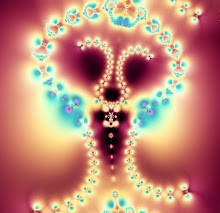Chrysanthemums sometimes called mums or chrysanths, are flowering plants of the genus Chrysanthemum in the family Asteraceae. They are native to East Asia and northeastern Europe. Most species originate from East Asia and the center of diversity is in China. Countless horticultural varieties and cultivars exist.
Wild Chrysanthemum taxa are herbaceous perennial plants or subshrubs. They have alternately arranged leaves divided into leaflets with toothed or occasionally smooth edges. The compound inflorescence is an array of several flower heads, or sometimes a solitary head. The head has a base covered in layers of phyllaries. The simple row of ray florets is white, yellow, or red; many horticultural specimens have been bred to bear many rows of ray florets in a great variety of colors. The disc florets of wild taxa are yellow. Pollen grains are appropriately 34 microns. The fruit is a ribbed achene.[8] Chrysanthemums start blooming early in the autumn. This is also known as favorite flower for the month of November.
Chrysanthemums were first cultivated in China as a flowering herb as far back as the 15th century BC. Over 500 cultivars had been recorded by 1630. By the year 2014 it was estimated that there are now over 20,000 cultivars in the world and about 7,000 cultivars in China.The plant is renowned as one of the Four Gentlemen in Chinese and East Asian Art. The plant is particularly significant during the Double Ninth Festival.
Chrysanthemum cultivation began in Japan during the Nara and Heian periods (early 8th to late 12th centuries), and gained popularity in the Edo period (early 17th to late 19th century). Many flower shapes, colours, and varieties were created. The way the flowers were grown and shaped also developed, and chrysanthemum culture flourished. The Imperial Seal of Japan is a chrysanthemum and the institution of the monarchy is also called the Chrysanthemum Throne. A number of festivals and shows take place throughout Japan in autumn when the flowers bloom. Chrysanthemum Day , Kiku no Sekku) is one of the five ancient sacred festivals. It is celebrated on the 9th day of the 9th month. It was started in 910, when the imperial court held its first chrysanthemum show.
Chrysanthemums entered American horticulture in 1798 when Colonel John Stevens imported a cultivated variety known as 'Dark Purple' from England. The introduction was part of an effort to grow attractions within Elysian Fields in Hoboken, New Jersey.
Yellow or white chrysanthemum flowers of the species C. morifolium are boiled to make a tea in some parts of East Asia. The resulting beverage is known simply as chrysanthemum tea pinyin: júhuā chá, in Chinese). In Korea, a rice wine flavored with chrysanthemum flowers is called gukhwaju
Chrysanthemum leaves are steamed or boiled and used as greens, especially in Chinese cuisine. The flowers may be added to dishes such as mixian in broth, or thick snakemeat soup to enhance the aroma. Japanese cuisine sashimi uses small chrysanthemums as garnish.
In some countries of Europe (e.g., France, Belgium, Italy, Spain, Poland, Hungary, Croatia), incurve chrysanthemums symbolize death and are used only for funerals or on graves, while other types carry no such symbolism; similarly, in China, Japan, and Korea of East Asia, white chrysanthemums symbolize adversity, lamentation, and/or grief. In some other countries, they represent honesty. In the United States, the flower is usually regarded as positive and cheerful, with New Orleans as a notable exception.
In the Victorian language of flowers, the chrysanthemum had several meanings. The Chinese chrysanthemum meant cheerfulness, whereas the red chrysanthemum stood for "I Love", while the yellow chrysanthemum symbolized slighted love. The chrysanthemum is also the flower of November.









So cool. Thanks.
ReplyDelete